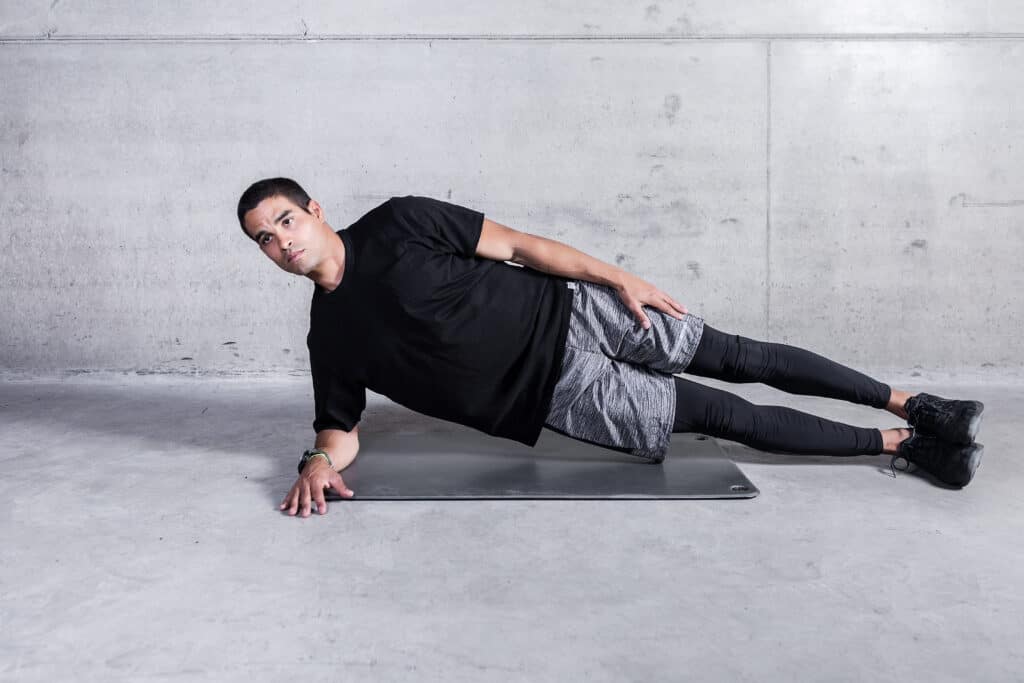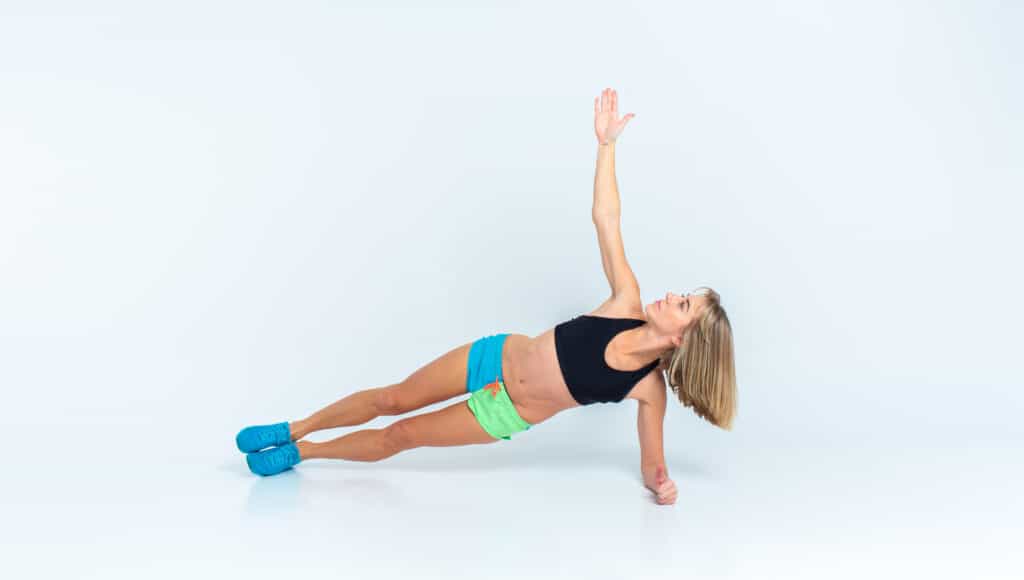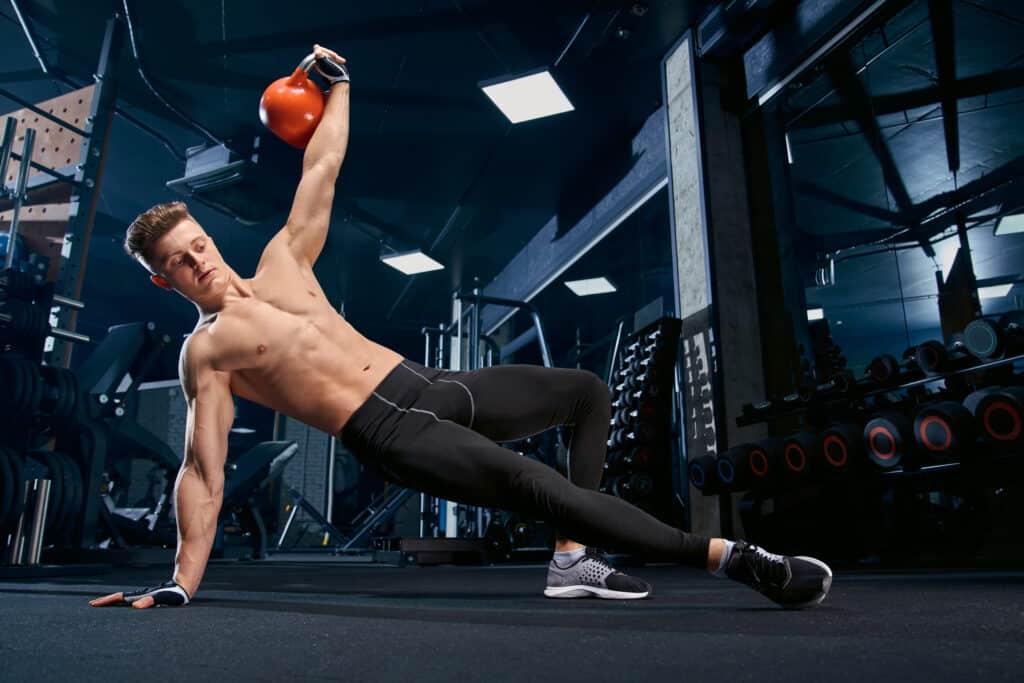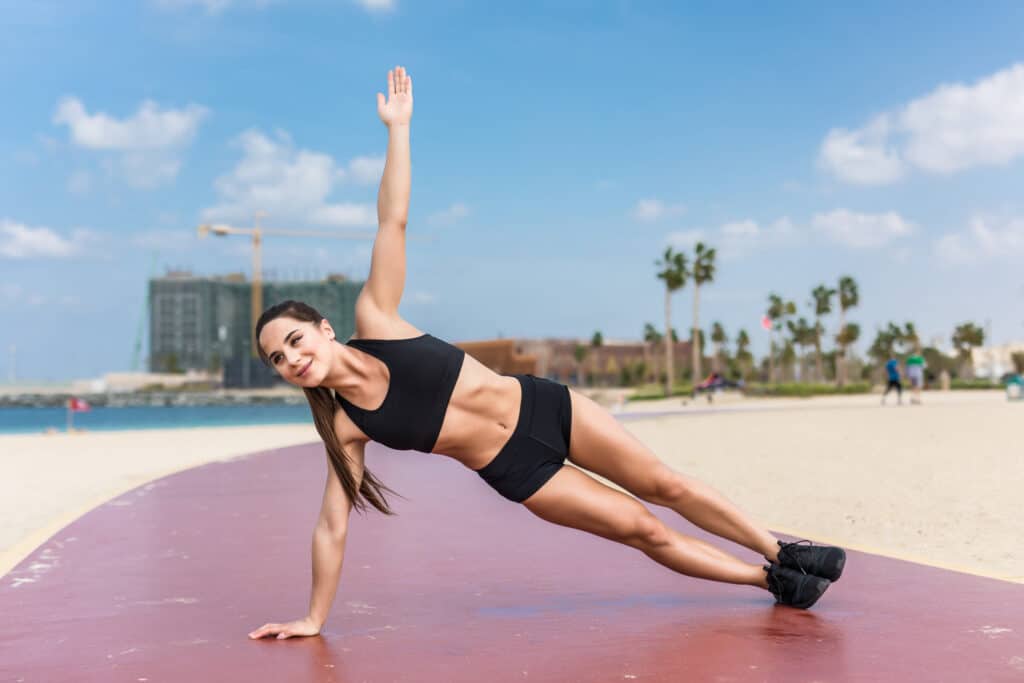One of the best exercises you can do if you want a strong core is a side plank. In fact, not only is it effective, it’s also safe on the back and as versatile as exercises come. You see many gym goers performing different variations of the exercise when working out. Have you ever wondered, though, what are the benefits of “planking” and what other muscle groups are involved other than the obliques?
What Are the Benefits of a Side Plank?
Above all, side plank target the obliques, or the “outer abs,” but the exercise reveals its true potential regarding the secondary muscles it engages. This simple movement, a side-facing plank in which you rest on your forearm, lifting and lowering your hips, essentially works every muscle that the obliques touch or influence. Aside from all the benefits, the side plank brings plenty of convenience to the table as a bodyweight exercise. All you need for a side plank is an exercise mat and a few free minutes. The power of the side plank extends well beyond your obliques. The side plank influences every muscle that the obliques touch or are related to. Here are some quick facts about this great exercise:
- The side plank works more than 40 percent of your upper and lower back muscles. This is more than many of the common back exercises people do.
- Not only does it work your obliques exceptionally well (about 50 percent of their maximum) it works your rectus abdominis (aka the “six-pack muscle”) as well (about 34 percent of its maximum).
- The side plank is and excellent exercise to train one of the deep back muscle known as the “QL” or the quadratus lumborum. The QL is an important muscle for providing stability to your spine and hips.
- The side plank is one of the best ways to work your hip abductor muscles. The hip abductor muscles work at about 74 percent of their maximum during the plank. This is almost double the work that this muscle does during the exercise that is most commonly prescribed for hip muscle weakness, the side lying leg raise.
Exercise Modifications
You can do the traditional side plank or you can easily change things up making it easier or more difficult. For example.
Lift your top leg up. This increases the stress on the side of the body closest to the ground.
Flex at the hip of the bottom leg. This puts all of the weight on your top leg and is the excellent way to train your inner thighs (e.g. your hip adductor muscles). This is a great exercise for everyone from a hockey players to an equestrian. Instead of supporting yourself from your forearms or feet you can support yourself from your knees (easier) or from you hand (easier on the muscles but harder to balance).
Why Is All This Important?
If you are a runner, triathlete, cyclist or swimmer then the side plank must be part of your conditioning program. Ideally, the side plank, as part of a core program, is done a minimum of three times per week. The plank position can be held for 3-10 seconds and then you can “roll” to the other side, hold that position and then roll back. Keep repeating this until you no longer can maintain good form. Rest one to two minutes and then perform another set. As you get stronger, hold the position for 30-seconds to 2-minutes.
The basic by-product of the side plank is it builds muscle endurance and strength, invariably providing hip and trunk stability. The muscles involved in a side plank help maintain a neutral pelvis. In turn, the spine is “held” in a strong, functional position. This not only helps prevent back and hip pain but also plays a role in preventing knee injuries. One important aspect of knee pain is hip instability and hip abductor weakness. The side plank is ideal for improving stability around the hips thus preventing knee pain caused by hip dysfunction.
Muscle Recruitment During Side Plank
In addition to providing a great endurance workout for the obliques, transverse abdominis, and rectus abdominis, side planks work many of the muscles that make up the core or trunk. This particular exercise engages the glutes as synergists, or muscles that help other muscles complete a movement. Side plank focuses especially on the hips, engaging other synergists such as the quadratus lumborum, psoas major and hip adductors. Major back muscles such as the iliocostalis of the lower back and the latissimus dorsi of the middle back also get recruited or worked when performing a side plank.
Side planks don’t stop at the abs and trunk. Upper-thigh muscles, including the gracilas and pectineus act as synergists, as do the deltoids, supraspinatus, trapezius and upper back. Likewise, the pectoralis muscles of the chest and levator scapula of the upper shoulders serve as stabilizers, or muscles that help other muscles maintain a specific position during an exercise.
Additional Muscle Engagement
The side plank not only excels in the quantity of muscles it engages, it also offers quality engagement. Physiotherapist and chiropractor Greg Lehman notes that this exercise engages 40 percent of your upper and lower back muscles, a figure far greater than typical back exercises. Lehman also says that the obliques and rectus abdominal experience engagement of 50 percent and 34 percent respectively, making for abdominal engagement roughly on par with crunches. The hips get the biggest benefit, however, at about 74 percent engagement. That’s twice the muscle engagement of the common lying leg raise.
Low-Back Pain
A 2012 study published in the Journal of Strength and Conditioning Research out of the University of Virginia reveals further benefits of side planks for those who suffer from recurrent low-back pain (LBP). This study found that those with recurrent LBP experience the same level of muscle activation, or efficient muscle contraction, as those who do not suffer from LBP when performing a side plank. The news is doubly good, as the same study notes that a weak transverse abdominis may actually be part of the cause of LBP.
Exercise Progression
The article touched on earlier that the side plank among other things is a versatile exercise. It can be adjusted for any fitness level. A novice exerciser might initially try a standing side plank leaning against a wall. A safe option in terms of an exercise progression would be to move to the floor with both knees bent and one hand on the floor for added support. As someone becomes stronger they could progress to a more traditional side plank, keeping the legs straight and the forearm on the ground. At this point, the goal could be to increase overall hold time or increase the sets and repetitions. Some back experts, like Dr. Stuart McGill, believe in focusing on the ladder, more sets and repetitions, rather than one long set holding it for a specific time. The following photos demonstrate a few of the many plank variations.



The Jefit app offers many different core exercises found in existing programs in the routine database or when building a new exercise session. Try adding the side plank or one of many plank variations to your next workout. Stay Strong with Jefit!
Try Jefit App Today
Jefit, named best app for 2022 by PC Magazine, Forbes Health and others, comes equipped with a customizable workout planner and training log. Take advantage of Jefit’s exercise database for your strength workouts. Visit our members-only Facebook group. Connect with like-minded people, share tips, and advice to help get closer to reaching your fitness goals. Try one of the new interval-based workouts and add it to your weekly training schedule. Stay strong with Jefit as you live your fitness lifestyle.
- 5 Bodyweight Exercises When You Can’t Get to the Gym - February 7, 2025
- Exercise Training Tips for Beginners - February 3, 2025
- 5 Tips on Getting Back to the Gym After a Long Break—And What to Expect - January 1, 2025
